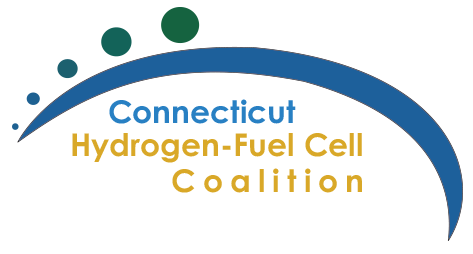A fuel cell is a device that uses, but does not burn, hydrogen (or a hydrogen-rich fuel such as domestic natural gas) and oxygen to create an electric current. Fuel cells occupy a technology platform that when coupled with electric drivetrains have the potential to replace the internal combustion engine (ICE) in vehicles and provide power for stationary and portable power applications. Fuel cells are in commercial service throughout the world, providing thermal energy and electricity to power the grid, homes, and businesses. Fuel cells are also used in vehicles, such as forklifts, automobiles, trucks, buses, and other land, marine, air, and space equipment. Fuel cells for portable applications currently in development will provide power for video cameras, military electronics, laptop computers, and cell phones
The magnitude of power produced by a fuel cell depends on several factors, including fuel cell type, cell size, the temperature at which it operates, and the pressure at which the gases are supplied to the cell. A single fuel cell produces enough electricity for only the smallest applications. Therefore, to provide the power needed for most applications, individual fuel cells are combined in series into a fuel cell stack. A typical fuel cell stack may consist of hundreds of fuel cells.
Fuel Cell Technology Comparison Chart
Uses
Fuel cell technology has high value and opportunity to help meet the projected increase in demand and need for new generation capacity with clean and high efficiency generation located directly at the customer’s site. Distributed generation (DG) and energy storage will increase efficiency, improve end user reliability, and reduce emissions. Fuel cell technology can also provide opportunities to maximize the efficiency and cost effectiveness of fuel cells with combined heat and power (CHP) applications. The use of CHP helps increase the efficiency of on-site energy use by recycling waste thermal energy for many end use applications, including hot or chilled water, space conditioning, and process heat. There is also an opportunity for tri-generation to simultaneously produce heat, power, and hydrogen for storage and/or transportation.
Learn more about strategic targets for fuel cell deployment.
Benefits
Fuel cells are cleaner and more efficient than traditional combustion-based engines and power plants. When pure hydrogen is used to power a fuel cell, the only byproducts are water and heat—no pollutants or greenhouse gases are produced. That’s good for our health and the environment. The combustion of fossil fuels for electricity production and motor vehicles are significant sources of NOx and CO2 emissions. In the stationary sector, the development of 170 MWs of fuel cell generation capacity in Connecticut would reduce NOx emissions by approximately 160 metric tons annually. In the transportation sector, zero-emission FCEVs could replace existing conventional vehicles in Connecticut, starting with 591 fleet vehicles, reducing annual CO2 emissions by approximately 6,400 metric tons and NOx emissions by 2.2 metric tons. The reduction of these emissions through the use of fuel cell technology would improve air quality, reduce health problems, reduce carbon emissions that contribute to climate change, and help to meet National Ambient Air Quality Standards.
Since fuel cell technology is more efficient than combustion-based technologies, less energy is needed to provide the same amount of power. Finally, because hydrogen can be produced using a wide variety of resources found right here in the United States—including natural gas, biological material, and even water—using hydrogen fuel cells reduces our dependence on other countries for fuel. Click here for more information on the benefits of hydrogen and fuel cells.

Animation (c) 2003 Michigan Technological University.
Investigator: Dr. Gerald Caneba. Animator: Dr. Susan E. Hill.
Used with permission.
Source: U.S. Dept of Energy
